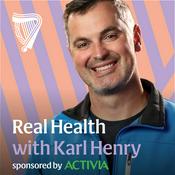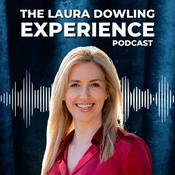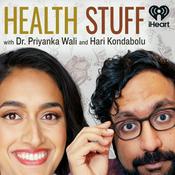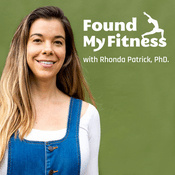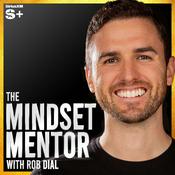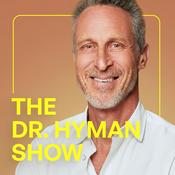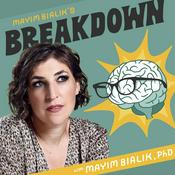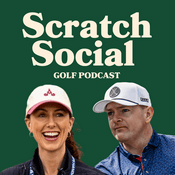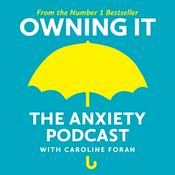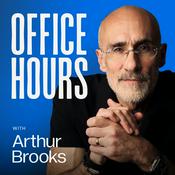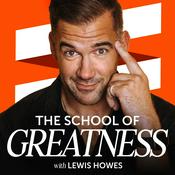164 episodes

Knee Tendon Rehab with Erik Meira
26/12/2025 | 1h 6 mins.
Chapters 00:00 Introduction to Erik Meira and His Background 02:39 The Journey into Physical Therapy 05:51 Transitioning from Hip to ACL Focus 08:50 Understanding ACL Rehabilitation Challenges 12:01 The Role of the Quadriceps in Recovery 14:49 Pain Management and the Nervous System 17:40 Graft Types and Their Impact on Recovery 20:47 Exploring Force Output and Pain Inhibition 23:57 Warm-Up Strategies and Moment Arm Mechanics 26:39 Practical Applications in Rehabilitation 31:52 Phases of Rehabilitation 36:52 Understanding Blood Flow Restriction (BFR) Training 45:42 The Role of Pain and Function in Recovery 51:25 The Importance of the Quadriceps in ACL Recovery 55:35 The Role of the Soleus in Knee Extension 59:56 Simplifying Rehabilitation: The Focus on Force Production Takeaways Eric Meira has decades of experience in physical therapy, focusing on sports rehabilitation. He emphasizes the importance of understanding the science behind rehabilitation. Long-term rehab is crucial for athletes, especially with chronic injuries. Pain management is often more about the nervous system than actual tissue damage. The quadriceps play a vital role in ACL recovery and overall knee function. Soleus muscle strength can compensate for quadriceps weakness in some cases. Nervous system calibration is essential for restoring function post-injury. BFR training can help maintain muscle strength when traditional loading is not possible. Restoring force production is key to successful rehabilitation. Rehabilitation should focus on the athlete's capacity to perform their sport. Website: https://thesciencept.com Courses: https://thesciencept.com/courses/ Instagram: https://www.instagram.com/erikmeirapt/ Notes: https://jackedathlete.com/podcast-164-knee-tendon-rehab-with-erik-meira/

Lateral Gastrocnemius in Achilles Tendinopathy with Gabriel Fernandes
08/12/2025 | 1h 13 mins.
Chapters 00:00 Introduction to Gabriel Fernandes and His Work 03:51 Exploring the Role of the Soleus in Achilles Tendinopathy 11:56 Investigating the Lateral Gastrocnemius and Its Implications 18:30 Understanding Muscle Fatigue and Endurance in Running 34:14 Practical Applications for Rehabilitation and Training 37:49 Cortical Inhibition and Tendinopathy 39:27 Deficits in Endurance and Peak Force 40:48 Measuring Muscle Capacity and Joint Angles 43:13 Hypertrophy and Muscle Adaptation 45:57 Atrophy in Calf Muscles 49:23 Rehabilitation Strategies for Lateral Gastroc 53:03 Foot Positioning and Muscle Activation 56:06 Biomechanics of Gait and Muscle Engagement 01:00:47 Neurophysiology and Muscle Recruitment 01:03:14 External Feedback and Muscle Training 01:06:03 E-Stim and Muscle Activation 01:08:10 Subtendinous Mechanics and Foot Positioning 01:10:16 Future Research Directions Takeaways Gabriel Fernandes is a physiotherapist with a focus on calf muscles and tendons. Research indicates that the lateral gastrocnemius may play a more significant role in Achilles tendinopathy than previously thought. Cortical inhibition affects muscle force production, particularly in individuals with tendinopathy. Endurance deficits are commonly observed in patients with Achilles tendinopathy, impacting their rehabilitation. Rehabilitation strategies should consider specific muscle contributions and include targeted exercises for the lateral gastrocnemius. Foot positioning during exercises can influence muscle activation and should be tailored to individual needs. Eccentric training may help improve muscle function and reduce inhibition in affected muscles. Neurophysiological assessments can provide insights into muscle drive and function in tendinopathy patients. Future research should explore the relationship between muscle fatigue and tendinopathy more deeply. Collaboration between clinicians and researchers is essential for advancing treatment strategies. Gabe on Instagram: https://www.instagram.com/gabephysio/ Achilles Tendon Survey: https://scuau.qualtrics.com/jfe/form/SV_4OsDZUKYLJonUUK?utm_source=ig&utm_medium=social&utm_content=link_in_bio&fbclid=PAZXh0bgNhZW0CMTEAc3J0YwZhcHBfaWQMMjU2MjgxMDQwNTU4AAGnIIWMTpSNHXYHoYl8uvHxsmHVZvmbdhlZxeTBwHr31T0SSGCbHJnAhfrF3qY_aem_Qk9ROIvLdIVJlGy8kThOZg Paper (Selective triceps surae weakness in Achilles tendinopathy: it is time to look beyond the soleus): https://sportrxiv.org/index.php/server/preprint/view/633/1382?utm_source=ig&utm_medium=social&utm_content=link_in_bio&fbclid=PAZXh0bgNhZW0CMTEAc3J0YwZhcHBfaWQMMjU2MjgxMDQwNTU4AAGn5a-uyRWns7A2jHfVNnWCoehQ1PIgL7Ggya2Mz-kjgWM_jghd7BzybyM67D4_aem_62cdO-b2oHquLV5Ie8AmpA Gabe on Twitter: https://x.com/gabephysio Notes: https://jackedathlete.com/podcast-163-lateral-gastrocnemius-in-achilles-tendinopathy-with-gabriel-fernandes/

Peroneal and Tibialis Posterior Tendons with Blake Withers
03/12/2025 | 2h 22 mins.
Chapters 00:00 The Role of Podiatry in Rehabilitation 01:19 Exploring the Peroneal and Tibialis Posterior Tendons 04:25 Phases of Tendon Rehabilitation 07:14 Differentiating Tendon Injuries 10:30 The Importance of Accurate Diagnosis 24:12 Exploring Treatment Options for Tendon Pain 32:36 Understanding Orthotics and Their Role in Recovery 41:43 The Importance of Taping Techniques 44:29 Footwear Considerations for Pain Management 51:49 Differential Diagnosis in Tendon Pain 57:06 Understanding Insertional Pain and Loading Programs 58:14 The Role of Training Load in Running Injuries 01:00:03 Conservative Care for Tears and Injuries 01:02:04 Managing Detraining Effects During Recovery 01:05:35 Exploring Plantar Fasciitis and Treatment Options 01:07:06 Differentiating Types of Plantar Fasciitis 01:11:34 The Importance of Diagnosis in Treatment 01:15:15 Understanding Pain with Weight Bearing 01:18:37 Tibialis Posterior Tendonitis: Compression vs. Strain 01:25:24 Rehabilitation Strategies for Tendon Injuries 01:26:43 Rehabilitation Techniques for Tendons 01:33:20 Understanding the Capacity Phase in Rehabilitation 01:36:27 The Role of Resistance Training in Injury Prevention 01:47:25 Dynamic Function of the Foot and Ankle 01:58:24 Insights on Shin Splints and MTSS 01:58:42 Understanding Shin Splints and Their Treatment 02:02:25 The Role of Loading Cycles in Rehabilitation 02:04:40 Specificity in Rehabilitation: Running vs. Traditional Exercises 02:07:35 The Complexity of Tendon Healing and Rehabilitation 02:17:31 Future Directions in Tendon Research and Rehabilitation Takeaways Podiatry often misunderstood; it's more than just inserts. Tendons like peroneals and tibialis posterior require specific rehabilitation. Phases of rehab include pain management and capacity building. Differentiating between tendon injuries is crucial for effective treatment. Orthotics can significantly aid in unloading painful tendons. Load modification is key in managing chronic pain conditions. Footwear plays a vital role in recovery from injuries. Plantar fasciitis treatment requires understanding of compressive vs tensile pain. Education is essential for patients to understand their conditions. Effective communication with patients enhances treatment outcomes. Imaging is crucial for ruling out serious conditions in tendon injuries. Accurate diagnosis is essential for effective treatment of tendon pain. Rehabilitation should focus on the specific needs of the tendon involved. Ankle stiffness can significantly affect athletic performance. The minimum effective dose of exercise is important for maintaining tendon health. Tendon injuries require a combination of loading and unloading strategies for recovery. Nutrition plays a vital role in tendon healing and overall performance. Understanding the biomechanics of the foot is key to preventing injuries. The body adapts to loading cycles, which can influence recovery from injuries. Long-term monitoring of tendon health is necessary for athletes. Blake on Instagram: https://www.instagram.com/blake.sportspodiatrist/ Blake's Patreon: https://www.patreon.com/SportsMedicineProject?utm_medium=unknown&utm_source=join_link&utm_campaign=creatorshare_creator&utm_content=copyLink&fbclid=PAZXh0bgNhZW0CMTEAc3J0YwZhcHBfaWQMMjU2MjgxMDQwNTU4AAGn0B8PgJSRp-qaCYmqC4yGv8Xy0YmTk8VSIzUffdN9odCfz2j08OrOYFQH2ek_aem_ovO72KqzHk4lxDHBBRo0XA Blake's YouTube: https://www.youtube.com/channel/UCbqw1DRZlUIcGL7rr0CHo9g Blake's Podcast: https://open.spotify.com/show/6s99soNsAnzEKd0OyPBR8P?utm_source=ig&utm_medium=social&utm_content=link_in_bio&fbclid=PAZXh0bgNhZW0CMTEAc3J0YwZhcHBfaWQMMjU2MjgxMDQwNTU4AAGn9H8fpNukw1oIy4S-X-Y-A2iUVw-kzQN31uq6oRV-ZwVbccCHH0SgPy6Zdj8_aem_bagi5CYH-BipjAbACUQDiw Notes: https://jackedathlete.com/podcast-162-peroneal-and-tibialis-posterior-tendons-with-blake-withers/

Rectus Femoris and Soleus Aponeurosis Injuries with Filippo Tilli
29/11/2025 | 56 mins.
Chapters 00:00 Introduction to Myotendinous Junction Injuries 00:08 Pain Perception in Soleus Injuries 21:28 Rehabilitation Protocols for Soleus Injuries Takeaways Misdiagnosis is a significant issue in myotendinous injuries. Education is crucial for effective injury management. The rectus femoris has a complex three-layer structure. Proximal muscle action is like a whip, while distal action generates force. MRI is the gold standard for assessing injuries. Pain often manifests after activity, not during. Aponeurotic tissue requires longer healing times than muscle injuries. Tendon and aponeurosis have different mechanical properties. A multidisciplinary approach is essential for injury management. Continuous improvement in clinical practice is necessary. Filippo on Instagram: https://www.instagram.com/filippo_tilli_fisioterapista/ Filippo on LinkedIn: https://www.linkedin.com/in/filippo-tilli-429aa51a7/ Notes: https://jackedathlete.com/podcast-161-rectus-femoris-and-soleus-aponeurosis-injuries-with-filippo-tilli/

Patellar and Quadriceps Tendons with Jonas Riess
21/11/2025 | 1h 10 mins.
Chapters 00:00 Introduction to Tendinopathy and Personal Journeys 02:58 Exploring Treatment Approaches and Personal Experiences 05:42 Understanding the Science Behind Tendon Rehabilitation 08:52 The Role of Warm-Up Phenomenon in Tendon Health 11:34 Diving into the Berlin Method and Its Applications 14:54 Managing Tendinopathy in Professional Athletes 17:38 Innovative Exercises for Tendon Strengthening 20:40 Balancing Performance and Tendon Health 23:21 The Impact of Deep Knee Angles on Tendon Health 26:39 Utilizing Flywheel Training and K-Box for Rehabilitation 37:00 Understanding Tendon Overload and Training Methods 38:52 Managing Tendinopathy in High-Performance Athletes 41:52 The Impact of Surface on Tendon Health 45:05 Biomechanics of Jumping and Landing in Beach Volleyball 49:39 Exploring Adjunct Treatments for Tendinopathy Takeaways Jonas Riess shares his journey with patellar tendinopathy and how it shaped his career. The importance of understanding tendon loading and biomechanics in rehabilitation. Research from influential figures like Keith Barr and Jill Cook has shaped current practices. Warm-up phenomena can temporarily alleviate pain in tendinopathy cases. The Berlin method and decline squats are effective for treating patellar tendinopathy. Managing tendon pain requires a balance between loading and recovery. Innovative training methods can enhance performance while protecting the tendon. Beach volleyball presents unique challenges for tendon health due to surface dynamics. Adjunct therapies like collagen supplementation and shockwave therapy have mixed results. Effective communication and collaboration with athletes are crucial for successful rehabilitation. Jonas on Instagram: https://www.instagram.com/kukfrankfurt/ Jumper's Kneehab Programm: https://myablefy.com/s/kukfrankfurt/jumpers-kneehab Jonas on YouTube: https://www.youtube.com/channel/UCbyoRiUmk1MBqwxwEfthS2Q/featured Jonas's Linktree: https://linktr.ee/kukfrankfurt?utm_source=ig&utm_medium=social&utm_content=link_in_bio&fbclid=PAZXh0bgNhZW0CMTEAc3J0YwZhcHBfaWQMMjU2MjgxMDQwNTU4AAGnlEHgKh5AvX1xlo8utZkT83nxIYy09BNt3nN1P2tp8w8pdwLtIU2oSX1URA0_aem_PfHsdRbewB32IDrS3D2xKw Notes: https://jackedathlete.com/podcast-160-patellar-and-quad-tendons-with-jonas-riess/
More Health & Wellness podcasts
Trending Health & Wellness podcasts
About Jacked Athlete Podcast
Listen to Jacked Athlete Podcast, Real Health with Karl Henry and many other podcasts from around the world with the radio.net app

Get the free radio.net app
- Stations and podcasts to bookmark
- Stream via Wi-Fi or Bluetooth
- Supports Carplay & Android Auto
- Many other app features
Get the free radio.net app
- Stations and podcasts to bookmark
- Stream via Wi-Fi or Bluetooth
- Supports Carplay & Android Auto
- Many other app features


Jacked Athlete Podcast
download the app,
start listening.
